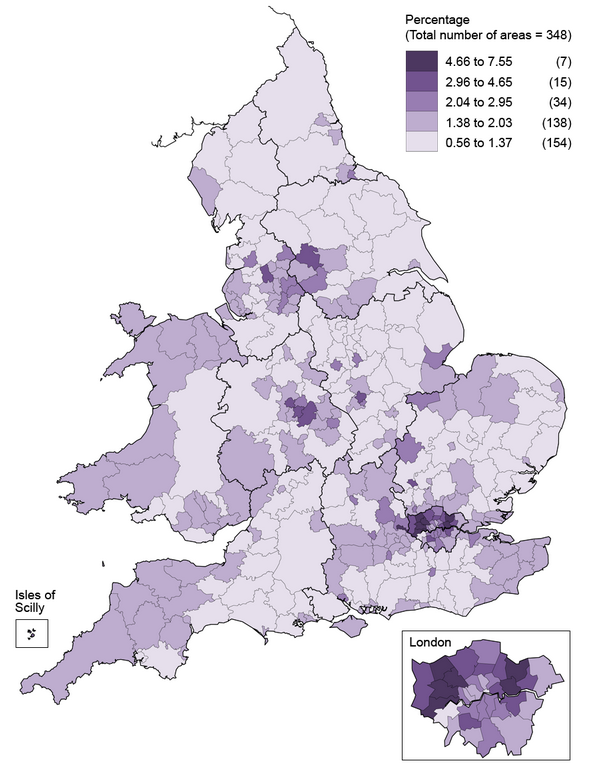London’s housing shortage is cramming young families into shared homes
The number of families living in shared houses ballooned by 70 per cent in the decade up to the last census, as typically young families are increasingly locked out of a the UK’s harsh housing market.
The Office for National Statistics has broken down some census data on the number of concealed families in England and Wales – the sort of groups that are impacted hardest by an inability to afford to buy (or even rent) houses.
Concealed families are described as family units living within another family home. Typically arrangements like single parents living with their children, in the mother or father’s parental home.
Halifax today show the UK’s price/earnings ratio climbing to its highest since 2008. In London, EY’s Item Club says the ratio is far worse, with average prices running at around 11 times a typical income.
There are now about 289,000 groups living in similar circumstances, up from 170,000 in 2001, with the number of instances growing more than 10 times as fast as unconcealed families.
The squeeze is worst in London, where the number of family units living in other peoples’ houses very nearly doubled between 2001 and 2011.

The phenomenon hits London particularly hard: Six of the seven local authorities where more than five per cent of the families are concealed are in the capital, with poorer parts of east and west London most obviously impacted.
While lone parents and their children are still more commonly living as concealed families, more couples with dependent children are not living in their own home.

In the same space of time, the average family home has declined in size rather than grown. The last decade also only saw 200,000 new dwellings built for an 800,000 increase in population.
Only seven of London’s 33 boroughs are estimated to have enough stock in the pipeline to satisfy the next 10 years of demand.
So how much worse does it have to get?